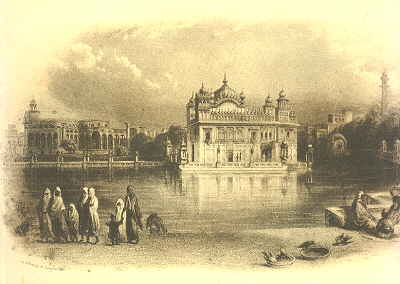DIAL SINGH, BHAI (1860-1921) was the son of Bhai Deva Singh and Mat Ram Kaur of Ghasitpur village, in Amritsar district. He learnt to read the Guru Granth Sahib in the village gurdwara and enlisted in an infantry battalion at Poona in his early youth. He served for 20 years and had received a gallantry award before he retired on a monthly pension of Rs 4. Dial Singh had married but had no offspring. Shortly before the happenings at Nankana Sahib, he attended a divan (Sikh religious congregation) at Chakk No. 75 Lahuke where he took the initiatory vows of the Khalsa at the hands of Bhai Narain Singh, and offered himself as a volunteer for the jatha or band of Bhai Lachhman Singh ofDharovali. He fell a martyr at Nankana Sahib on 20 February 1921. See NANKANA SAHIB MASSACRE
- 1
- 2




